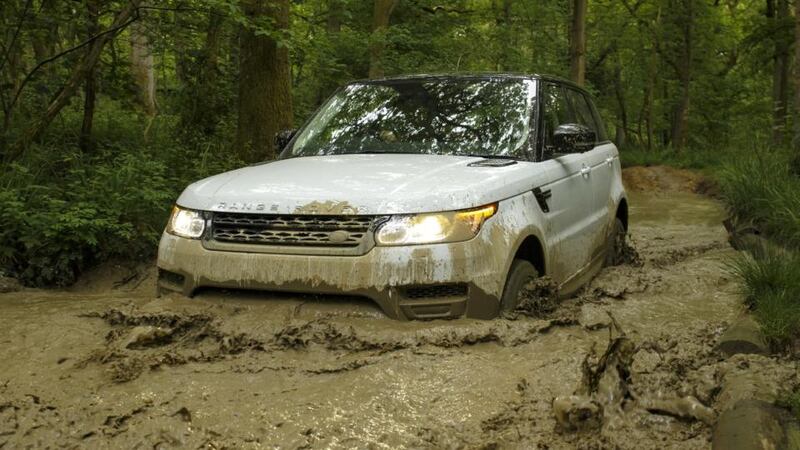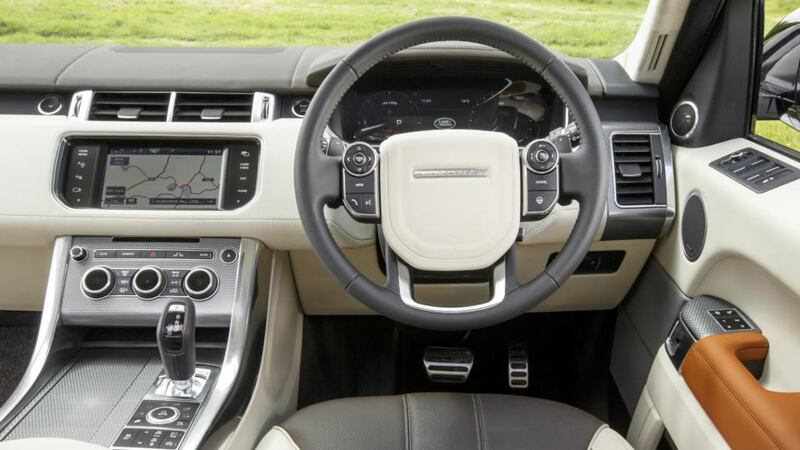First Drive: Range Rover Sport
Ian Beatty
The Range Rover Sport has continued to be a successful seller for Land Rover, with in excess of 415,000 units sold since it was first launched in 2005. Despite the severe downturn in the global economy they have continued to increase their sales, with 2013 representing the highest amount of new Range Rover Sport sales to date.


Land Rover has taken some of the dynamic qualities from the chic Evoque and luxuries of the all-new Range Rover to create a truly inspiring all-new Range Rover Sport. Visually, there are clues to this inter-breeding, the headlights and taillights, along with the rear roof spoiler hint at its smaller sibling, the Evoque, the interior is spacious and luxurious in a similar vein to the larger, full fat Range Rover.
The result is a stylish, luxurious but very capable sport SUV that has its own strengths to clearly create a unique niche between its close relatives. It’s dissimilar to its predecessor, with 75 per cent of its parts having been changed.
When the Range Rover Sport arrives in Ireland this coming September, customers can choose from one petrol and two diesel-powered variants. These will be followed by the introduction of a new hybrid model. The entry-level 3.0-litre TDV6 diesel offers a sufficient 258hp and 600Nm of torque.
The 3.0-litre SDV6 diesel unit has an increased power output, with 292hp, interestingly it has the same torque figure as the TDV6 variant. The petrol-powered Range Rover Sport has a colossal 5.0-litre V8 engine, which is supercharged to deliver a remarkable 510hp. All models are equipped with an eight-speed ZF automatic transmission. We recently drove both the 5.0-litre supercharged and 3.0-litre SDV6 variants.
There’s no mistaking which model you’re seated in when you press the start button, there’s a distinct snarl from the V8 petrol engine as it bursts into life. The acceleration is pretty mind blowing for a vehicle of this size and weight (2,310kg), it’s capable of reaching 100km/h from a standstill in a mere 5.3 seconds and go on to a limited top speed of 250 km/h.
Although the Supercharged Sport boasts undoubtedly impressive performance figures, it’s more suited to the American market and will go head to head with Porsche’s Cayenne Turbo. In Ireland only the super wealthy will purchase one to gain bragging rights amongst friends. In reality, the pick of the crop is the 3.0-litre SDV6 diesel model, it’s a gem of an engine with sufficient performance on offer at all times. In fact, it has almost the same torque as the audacious Supercharged variant (600Nm Vs 625Nm).
We drove the SDV6 model finished in the opulent Autobiography trim, which comes equipped with all the luxuries anyone could require. The interior is lavish and spacious, with a significantly lengthened wheelbase over its predecessor (increased by 178mm) there is improved legroom for rear seat passengers.
You can also order the Sport with an optional 5+2 seating arrangement, with 2 small seats that fold flat electrically into the boot floor. The driving position is commanding, although lower than its elder sibling the Range Rover. Official fuel consumption figures haven’t been announced, that said we averaged 8.2l/100km (34.4mpg) over the course of our test drive which included on and off-road driving. Land Rover claims an improvement in fuel efficiency across the range by up to seven per cent.
When you select Dynamic mode, this alters the roll resistance, steering, transmission and throttle settings to deliver a sharper, sportier driving experience. When you couple in the torque vectoring system, which distributes torque to the wheels with the most grip, the Range Rover Sport can tackle fast twisty sections of road with the poise and accuracy of a car half its weight.
Even in standard guise this new Range Rover Sport has a noticeable improvement in ride comfort over its precursor, through the use of a lightweight aluminium architecture it’s up to 420 kilograms lighter then before. The electric power steering has a direct feel and connects you to the road, this coupled with the precise ZF transmission and an eager engine enables you to extract driving satisfaction from your journey.
Although the vast majority of Range Rover Sport’s will never venture further a field then the school car park, it’s an extremely competent off-road machine. Equipped with Land Rover’s Terrain Response 2 the Sport can tackle almost any obstacle in its path, it can automatically select the most suitable setting for the terrain ahead.
All models run on mud and snow tyres as standard, with wheel sizes ranging from 19” to 22”. These versatile tyres don’t hinder motorway driving, the noise suppression into the cabin is excellent, something Land Rover has worked hard on improving.
A new feature and an industry first is Land Rover’s wade sensing system, sensors in the door mirrors monitor the water level below and display the current and maximum depth (850mm) on the central information screen. Such is Land Rover’s confidence in the Sport’s off-road prowess, we drove through a deep section of river, through steep forests and even into a Boeing 747 jumbo jet, finished with a high-speed runway blast to showcase all the talents the Range Rover Sport possesses. The more you drive it, the more it truly impresses.
When the new Range Rover Sport goes on sale in Ireland this September, its principle competitor will be the new BMW X5 which arrives this November. Range Rover will also be keen to attract sales from current Mercedes-Benz ML and Audi Q7 owners. Prices and specifications will be finalised in the coming weeks, however we would envisage an indicative starting price of approximately €88,000.
Despite the price increase over its predecessor, Land Rover Ireland is confident of achieving in the region of 120 units in 2014. I don’t think it will take too long before Land Rover outsell its previous model once this new Range Rover Sport takes to the streets. Sitting between the Evoque and the Range Rover this new Sport offers the optimum mix of both, resulting in being the best of the three (in our opinion).
Lowdown: SDV6 Autobiography
Engine: 2,993cc V6 diesel putting out 292hp and 600Nm with an eight-speed automatic transmission
Performance: 0-100km/h 7.2 seconds, max speed 210km/h
Economy: Official figures not announced
Emissions: (Motor Tax) 199g/km (€1,200)
Specifications: Autobiography Model - Standard features on the autobiography model include 14-way power adjustable front seats, cooled and heated front and second row seats, 4 zone climate control, soft door close, remote operated powered tailgate, cooler compartment, heated front screen, 1700W 23 speaker Meridian Premium audio system,
Rivals: BMW X5 xDrive30d M Sport 3.0 Diesel 258hp €87,310 (motor tax €570); Audi Q7 3.0 TDI S Line V6 Diesel 245hp €83,250 (motor tax €1,200), Mercedes-Benz ML 350 Bluetec 4Matic 258hp €80,105 (motor tax €1,200)
Price: Indicative Price of €88,000
Our Rating: 4/5 A top-class truly versatile luxury SUV if a little pricey
















